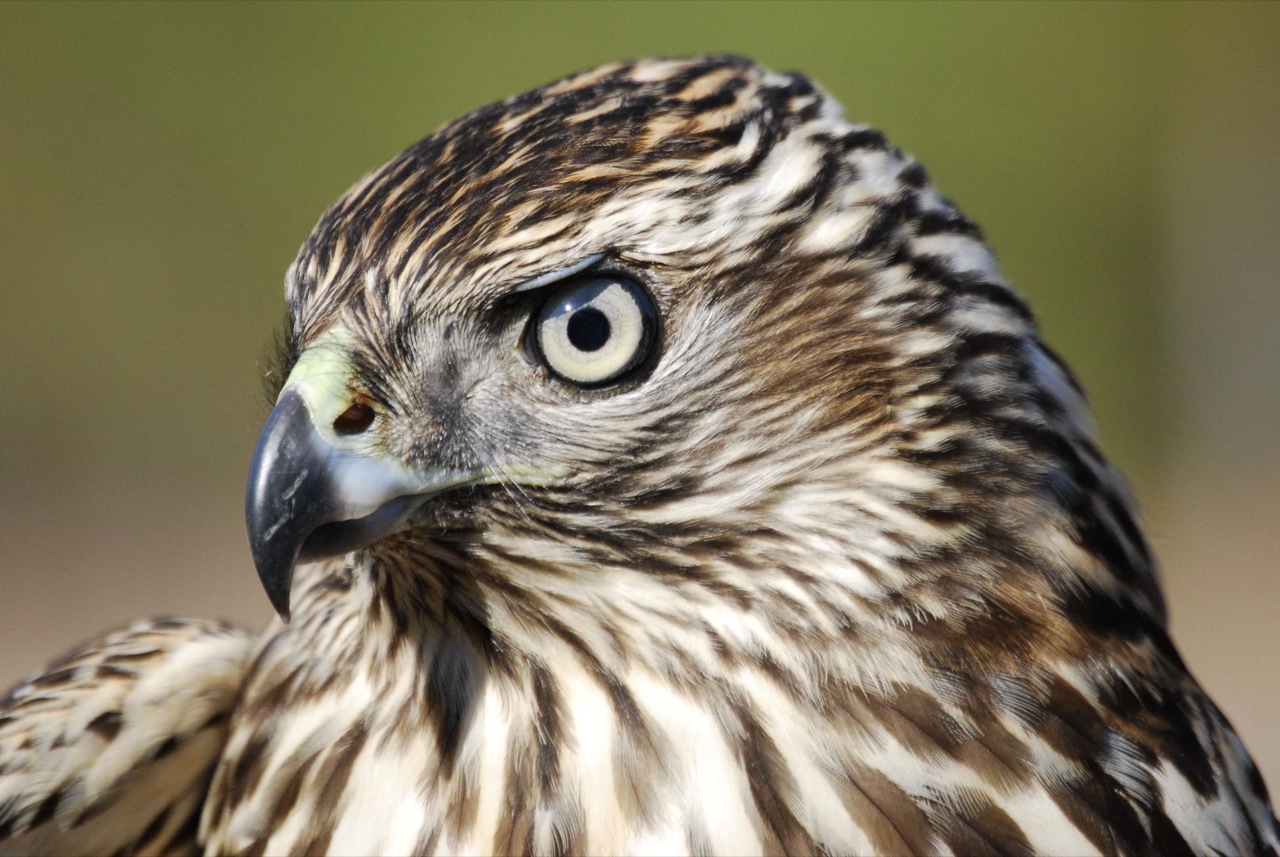It wasn't until about 4:30 p.m., just as the shadows lengthened enough to finally cast a pall over his bright feathers, that the owl finally flew to the top of the gravel mound in the quarry. Tom and Rick had already set up a cage holding two starlings as bait. We waited in great suspense until suddenly a University vehicle came down the road by the quarry, and the owl flushed to a nearby fence post. The owl knew the starlings were there, but it was far more cautious after that! For the next 30 minutes, Tom and Rick noted that the owl would land on the ground next to the trap and walk around and around, looking at the starlings, considering what to do.
Gene was summoned to the quarry to help, and he was getting ready to try and trap the owl with a bow net. Right about this time Mark called and reported that he and Brad Zinda, a wildlife student from UW Stevens Point, found another snowy sitting on a utility pole in the front yard of a house nearby. It was nearly 5:00 and getting dark. Since the snowy owl at the quarry was now skittish, Gene decided to try his luck with the snowy Mark and Brad found.
Gene set up a bow net on adjacent University land and backed up his vehicle just enough so that he could still monitor both the owl and the bow net containing a rock pigeon as bait, in nearly complete darkness. After 20 minutes, the owl attempted one quick pass at the pigeon in the bow net and then returned to a pole nearby.
By now it was about 5:35 p.m. and Gene turned on the headlights so he could see the trap. Then, quick as a flash, the owl swooped for the pigeon and Gene hit the remote control that caused the bow net to close. Gene, Stacy Taritas, and Maddie all made a mad dash into the bitter cold to release the owl and rescue the unharmed pigeon. Stacy later mentioned “that night was the experience of a lifetime.”
The bow net was packed up and the crew headed to the Kampen Road residence, owl carefully in tow, where it was learned that the other owl at the quarry had also been captured! The first owl finally went for the starlings and his talons got tangled in the trap for just long enough to allow the volunteers to approach and untangle him (and save the starlings).






















